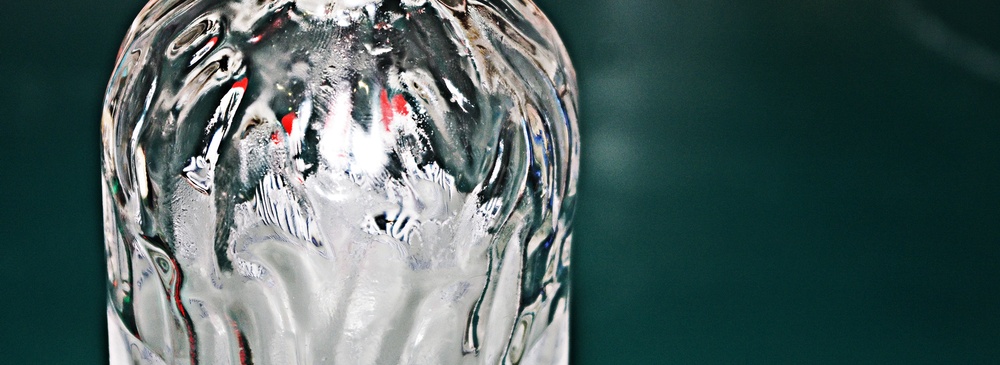31 January, 2015
~ Paul E. Richardson

If you believe the hype on premium vodka, more distillations is better. For years and years, double-distilled was the norm. Then along came triple-distillation, then quadruple- and quintuple-stills. Really, where will it stop?
Now Iowa Distilling Company (the raw material is corn, naturally), says they have come up with a new method of distilling that adds ozone to the distilling process, which "takes away all the impurities." The vodka is called IngeniOZ. And the company also makes rum, corn whisky and cinnamon-flavored whisky, the drinkers of which I hope I never meet in a back alley.
The idea is that the more impurities a vodka has, the less chance it will cause a hangover, because it is the impurities that cause hangovers:
A 2008 study published in the journal Alcohol & Alcoholism found the more congeners present in a spirit, the more likely the drinker will get a bad hangover. Moreover, dark liquors contain the most impurities, since they are an integral part of the flavor of these liquors. Currently, clear liquors such as popular vodkas Smirnoff, Absolute, and Grey Goose, have eight, 16, and 14 impurities, respectively.
But is it? The cited study was actually a review of other studies, including that 2008 one, and it indicated that congeners is not the only cause of hangovers, just one of them. In fact, the main upshot of the cited article is that more research needs to be done, because
several factors co-occur with the hangover state including dehydration effects and sleep deprivation. Disentangling these factors is very important and requires future research.
The article in question is called "The Alcohol Hangover – A Puzzling Phenomenon."
But the phenomenon is no puzzle. We at Vodkaphiles are digging deep in the journalistic muck and we have an answer to the puzzle: hangovers are caused by overdrinking.
There, we said it.
The human body (by which we mean the human liver) metabolizes alcohol at the rate of .015 of blood alcohol concentration (BAC) every hour. That means it takes 10 hours to get a .15 BAC (The legal definition for DUI in many place) back down to zero. But of course that is generally speaking. One must also take into consideration age, weight, liver condition, etc. Here is an intersting set of charts that lets you look at the number of drinks over time, based on sex and body weight.
Bottom line, hangovers are caused by drinking more liquor than your body was designed to metabolize. Practice moderation = no hangover.
But back to the main issue that spurred this post. How many times should vodka be distilled? If you love a good scotch, which is full of those "poisonous" congeners, what's wrong with a little in your vodka? And if you filter or ozone out all the "impurities," can there be any flavor left?
And let's not forget: after all that distilling is done, the alcohol content of the spirit is 80-90%, which means it has to be cut with water (and then probably filtered again). Which means that water is going to have more impact on flavor than any distilling process (that is by definition designed to remove flavor).
So, bottom line, don't be distracted by all this inside-vodka talk. After a certain point (we'd say three distillations) it comes down to craft factors that are too many to name (heck, where and when you drink that vodka may have more impact on your enjoyment than the number of stills involved). So what's a vodkaphile to do? Easy: get out there and taste a few brands. See what you like, what you don't like, and carry on.
Just please, oh please, don't put any ice in it.